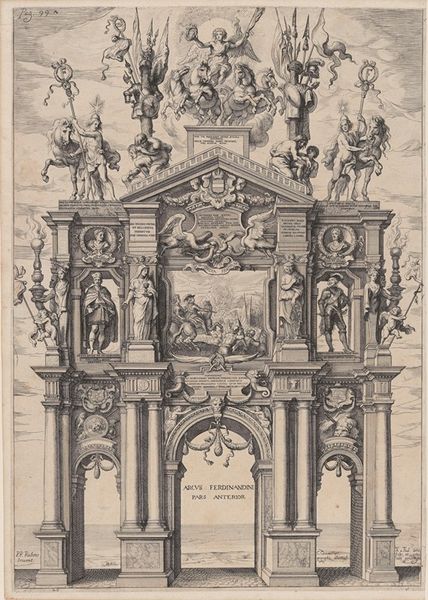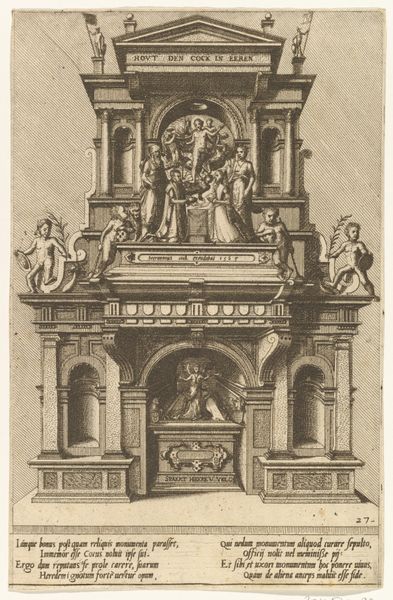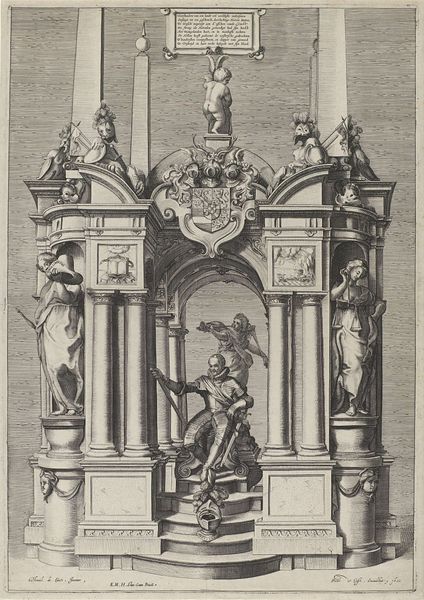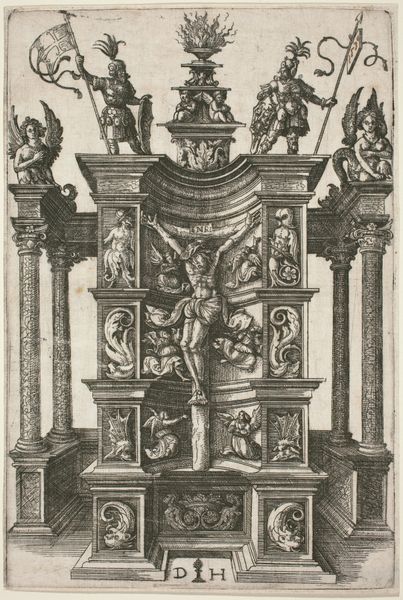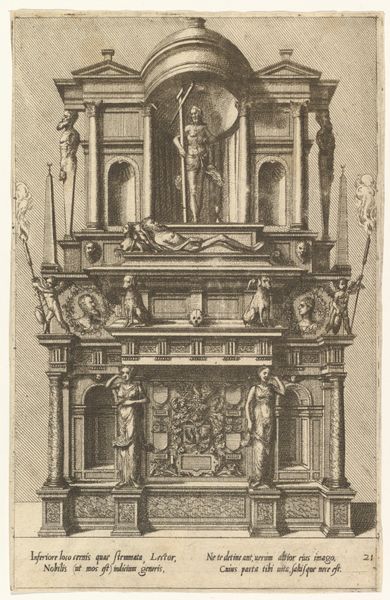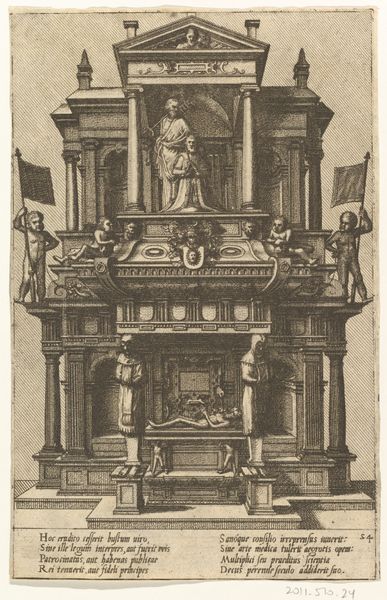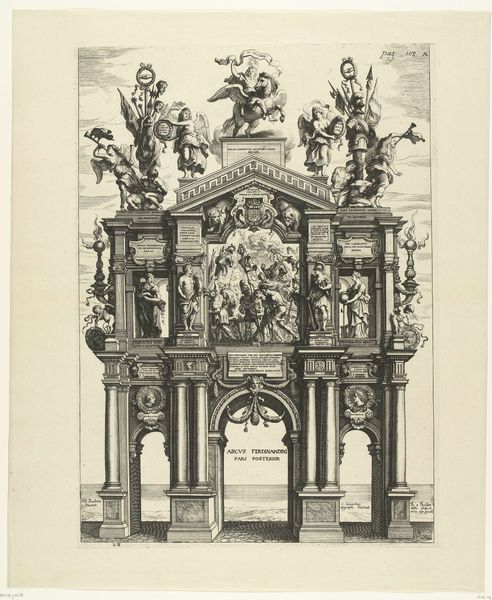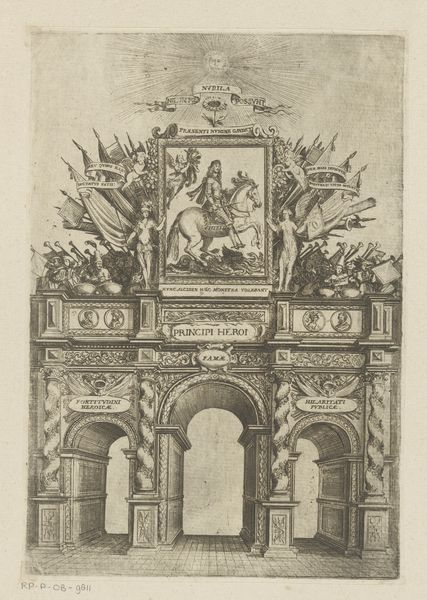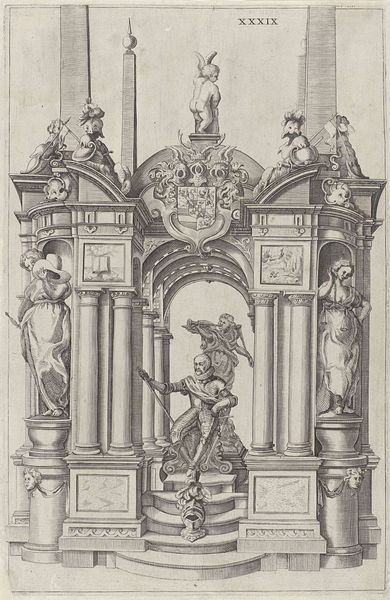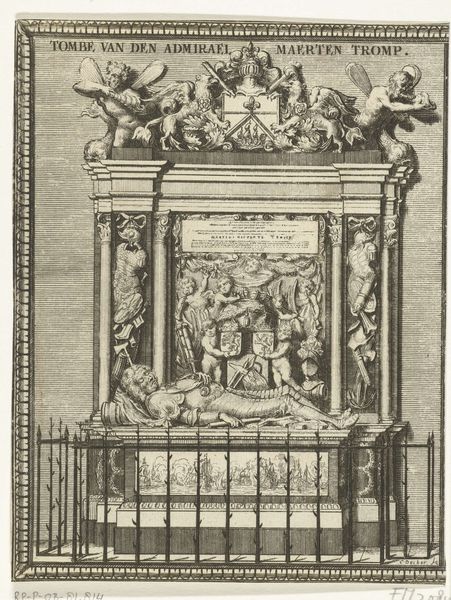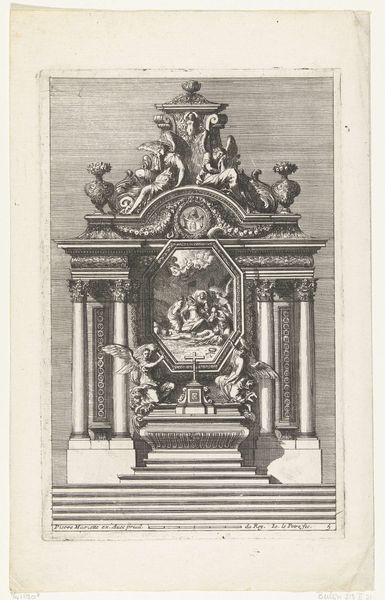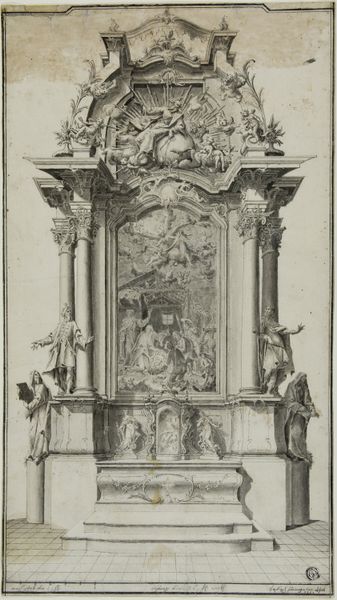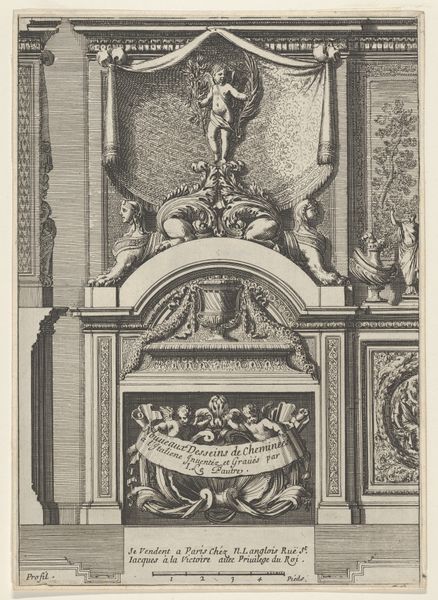
Design for an Architectural Structure with a Hunting Theme , Plate 74 from Dietterlin's Architettura 1598
0:00
0:00
drawing, print, engraving, architecture
#
drawing
#
aged paper
#
toned paper
#
light pencil work
#
mechanical pen drawing
# print
#
dog
#
sketch book
#
mannerism
#
11_renaissance
#
personal sketchbook
#
geometric
#
pen-ink sketch
#
arch
#
men
#
pen work
#
sketchbook drawing
#
history-painting
#
northern-renaissance
#
sketchbook art
#
engraving
#
architecture
Dimensions: sheet: 13 1/2 x 9 3/16 in. (34.3 x 23.3 cm) plate: 5 7/8 x 7 3/16 in. (15 x 18.3 cm)
Copyright: Public Domain
Editor: Here we have Wendel Dietterlin's "Design for an Architectural Structure with a Hunting Theme," an engraving from 1598. The overall tone seems strangely playful, yet also rigid, due to the animals contrasting with the strict architectural design. How do you interpret this unusual combination? Curator: That contrast you identify is central. Dietterlin, deeply influenced by Mannerism, challenges conventional architectural norms. The hunting theme, evident in the dogs, stags, and the female figure with a bow, likely references aristocratic power and leisure. However, this power is being re-imagined. This print is from his *Architettura*, a book meant to disseminate ideas, questioning whether Dietterlin is satirizing or celebrating that power. What do you think its reception might have been at the time? Editor: It’s hard to say for sure! I imagine it polarized audiences; perhaps some aristocrats enjoyed seeing their lifestyle represented in art, while others viewed it as an overly exaggerated or even mocking representation. Curator: Exactly! Think about the rising merchant class. Were they able to relate to this at all, or was it only meant for the aristocracy? This gets to the public role of art – who is it for and what is it communicating? These highly ornamented and visually complex architectural fantasies could also reflect social anxieties and power dynamics during the late Renaissance period. It invites us to think about art’s place in shaping societal attitudes. Editor: So the image functioned within specific socio-political conditions to invite diverse public readings and interpretations about class. I hadn't thought of that. Curator: And notice that *Architettura* functions, then and now, as a space to disseminate and receive such diverse points of view.
Comments
No comments
Be the first to comment and join the conversation on the ultimate creative platform.
